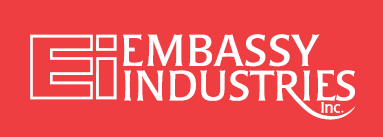- Products
- All Products List
Gas Boilers/Water Heaters
- Peak - Condensing
Baseboard Hot Water Radiation
- Panel-Track - Low Profile
- System 6 - High Capacity
- Synergy - Low Temp
- High Output Commercial-Pak - Ultra Heavy-duty
- Hot Water Kickspace Heater
- Hot Water Radiant Heat
- Product Literature
Brochures
Installation Manuals
Submittals
- Why Hydronics
- Glossary of Terms
- Contact Us
“Combi” Boilers:
Modern high efficiency boilers with built-in or integrated domestic hot water coils thus eliminating the need for separate large capacity storage tanks. Combi units offer semiinstantaneous hot water of up to 5 GPM which is more than substantial for showers, clothes washing, dish washing etc. The majority, if not all of the combi boilers are wall-hung appliances and save substantial space and can be installed in closets even.
Conduction:
The method of heating through objects that physically touch. Heat moves from warmer to cooler objects. Water heated through direct contact with the boiler is a form of conduction.
Forced Air:
A forced air system is often times referred to as a furnace. Furnaces in reality are specific to forced air systems but are often times inadvertently referenced with water (hydronic) systems as well. Hydronic heating systems however are driven by a boiler, not a furnace.
Forced air systems heat and distribute conditioned air through a distribution system consisting of a furnace, a fan or blower and metal ductwork that exits via floor or wall registers. Forced air systems are sometimes referred to as “scorched air” systems.
Heat Emitters:
Equipment used to distribute the heat to the occupied space. In hydronic systems you will see baseboard fin-tube radiation, radiant flooring or ceiling panels, kickspace heaters, panel radiators or even traditional radiators.
Heat loss:
Industry jargon for heat loss would be the very detailed calculation performed by a heating professional to properly size heating equipment for a particular dwelling. It is best known as a Manual J Heat Loss Calculation.
For our definition heat loss is the amount of conditioned air lost through variations in the dwelling including un-insulated walls/ceilings, windows, door cracks or any other area that conditioned air could escape through. It’s like running the car heater in the middle of winter with the windows open.
Hydronic Heating:
Hydronic heating is an energy efficient system of hot water generating equipment. The central point is the boiler which heats water that is circulated through copper pipe or radiant PEX tubing to a various heat emitters including under-floor radiant tubing, baseboard radiation, kickspace heaters or radiators to heat your home.
Outdoor Reset:
A hydronic system control strategy that continuously monitors and adjusts boiler supply water temperatures coincide with specific outdoor air temperatures. This allows the hydronic heating system to provide more heat when it’s colder and less heat when it’s warmer. This can be a very efficient process for the majority of the season when the system can operate at lower temperatures and keep the same level of comfort.
Radiation:
It is the method of intentionally transferring energy (heat) from an emitting heat source to an object.
The warmth felt from the sun is a good everyday example. The heat energy from the sun is felt by objects, including us as people.
Baseboard radiation is a heat emitter that transfers the heat generated from the hot water running through the baseboard fin-tubes to objects or into the open space (room).
Stratification:
Air stratification is the tendency of two or more airstreams to remain separated. This commonly occurs in forced air systems where warm air has a natural tendency to rise leaving cooler air at the level of the occupants. This is often where the drafts and cold spots are felt with a forced air system and depending on ceiling height could result in substantial temperature differentials. Stratification can also cause forced air systems to run more often and longer increasing cycle times which puts additional wear and tear on components while decreasing overall energy efficiency.
Supply Water Temperatures:
The temperature setting at which the boiler is set to distribute water. Traditional baseboard systems have a rule of thumb of 180° out and 160° back (return water temperature). This can vary based on the size of the heating loop. Modern condensing and radiant PEX tube applications however use lower supply water temperatures to promote condensing in the boiler that maximizes efficiency. These types of systems would be set at 140 – 150° supply water temperatures.


